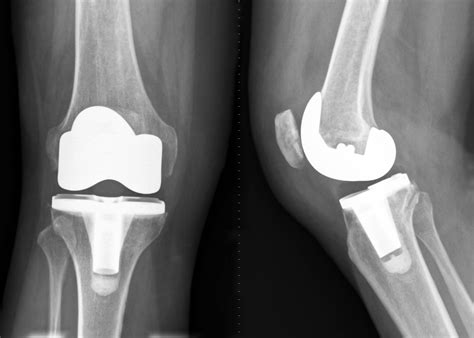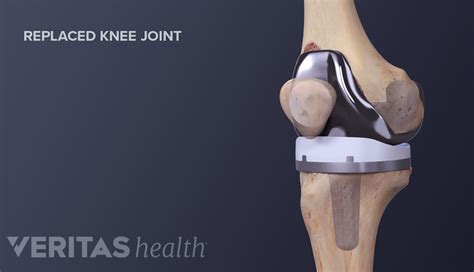Intro
Discover the ultimate Knee Replacement Surgery Guide, covering preparation, procedures, and recovery. Learn about total knee replacement, partial knee replacement, and minimally invasive techniques for a successful knee arthroplasty and improved joint health.
Knee replacement surgery, also known as knee arthroplasty, is a surgical procedure that involves replacing a damaged or diseased knee joint with an artificial one. This surgery is usually considered when other treatments, such as physical therapy, medication, and lifestyle modifications, have failed to provide relief from knee pain and disability. Knee replacement surgery has become a common and effective procedure for restoring mobility and alleviating pain in individuals with severe knee damage or degenerative conditions like osteoarthritis.
The importance of understanding knee replacement surgery cannot be overstated, as it is a significant decision that can greatly impact an individual's quality of life. With the advancements in medical technology and surgical techniques, knee replacement surgery has become safer and more effective, offering individuals the opportunity to regain their mobility and independence. However, it is crucial to approach this decision with a clear understanding of the procedure, its benefits, and its potential risks. In this article, we will delve into the world of knee replacement surgery, exploring its intricacies, benefits, and what to expect during the recovery process.
As individuals consider knee replacement surgery, they often have many questions and concerns. What are the benefits of knee replacement surgery? How is the procedure performed? What are the potential risks and complications? What can be expected during the recovery process? Answering these questions and providing a comprehensive understanding of knee replacement surgery is essential for empowering individuals to make informed decisions about their health and well-being. By exploring the various aspects of knee replacement surgery, individuals can better understand the procedure and what to expect, ultimately making a more informed decision about whether knee replacement surgery is right for them.
Knee Replacement Surgery Overview

Types of Knee Replacement Surgeries
There are several types of knee replacement surgeries, each with its own unique characteristics and benefits. Total knee replacement involves replacing the entire knee joint with an artificial one, while partial knee replacement involves replacing only the damaged or diseased portion of the knee joint. Revision knee replacement involves replacing a previously implanted artificial knee joint with a new one, often due to wear and tear or complications. Understanding the different types of knee replacement surgeries is essential for individuals to make informed decisions about their treatment options.Knee Replacement Surgery Benefits

Pain Relief and Mobility
Pain relief and mobility are two of the primary benefits of knee replacement surgery. By replacing the damaged or diseased knee joint with an artificial one, individuals can experience significant reductions in pain and discomfort, allowing them to engage in daily activities with greater ease and independence. Improved mobility also enables individuals to participate in low-impact activities, such as walking, cycling, or swimming, which can help to improve overall health and well-being.Knee Replacement Surgery Procedure

Surgical Techniques and Technologies
Advances in surgical techniques and technologies have improved the safety and effectiveness of knee replacement surgery. Computer-assisted navigation, robotic-assisted surgery, and minimally invasive techniques are just a few examples of the innovative approaches being used to enhance the precision and accuracy of knee replacement surgery. These advances have led to improved outcomes, reduced recovery times, and enhanced patient satisfaction.Knee Replacement Surgery Risks and Complications

Minimizing Risks and Complications
To minimize the risks and complications associated with knee replacement surgery, individuals should carefully follow their surgeon's instructions and guidelines. This may include taking medications as prescribed, attending follow-up appointments, and engaging in physical therapy to improve mobility and strength. By working closely with their healthcare team, individuals can reduce their risk of complications and ensure a smooth and successful recovery.Knee Replacement Surgery Recovery

Physical Therapy and Rehabilitation
Physical therapy and rehabilitation play a critical role in the recovery process, helping individuals to regain mobility, strength, and independence. A physical therapist will work with the individual to develop a personalized exercise program, which may include stretching, strengthening, and range-of-motion exercises. By following this program and attending regular therapy sessions, individuals can improve their mobility, reduce pain and discomfort, and enhance their overall quality of life.Knee Replacement Surgery Alternatives

Non-Surgical Treatments
Non-surgical treatments, such as physical therapy, medication, and lifestyle modifications, may be effective for individuals with mild to moderate knee damage or degenerative conditions. These treatments can help to reduce pain and discomfort, improve mobility, and enhance overall quality of life. However, for individuals with severe knee damage or degenerative conditions, knee replacement surgery may be the most effective treatment option.What is knee replacement surgery?
+Knee replacement surgery is a surgical procedure that involves replacing a damaged or diseased knee joint with an artificial one.
What are the benefits of knee replacement surgery?
+The benefits of knee replacement surgery include pain relief, improved mobility, and enhanced quality of life.
What are the potential risks and complications of knee replacement surgery?
+The potential risks and complications of knee replacement surgery include infection, blood clots, nerve damage, and implant failure.
What is the recovery process like after knee replacement surgery?
+The recovery process typically involves several stages, including hospitalization, rehabilitation, and physical therapy.
Are there alternative treatments to knee replacement surgery?
+Yes, alternative treatments may include physical therapy, medication, lifestyle modifications, and alternative surgical procedures, such as arthroscopy or osteotomy.
As we conclude our exploration of knee replacement surgery, we hope that individuals have gained a deeper understanding of the procedure, its benefits, and its potential risks and complications. By empowering individuals with knowledge and information, we aim to support informed decision-making and enhance overall health and well-being. If you have any further questions or concerns about knee replacement surgery, we encourage you to consult with your healthcare provider or share your thoughts and experiences in the comments below.
